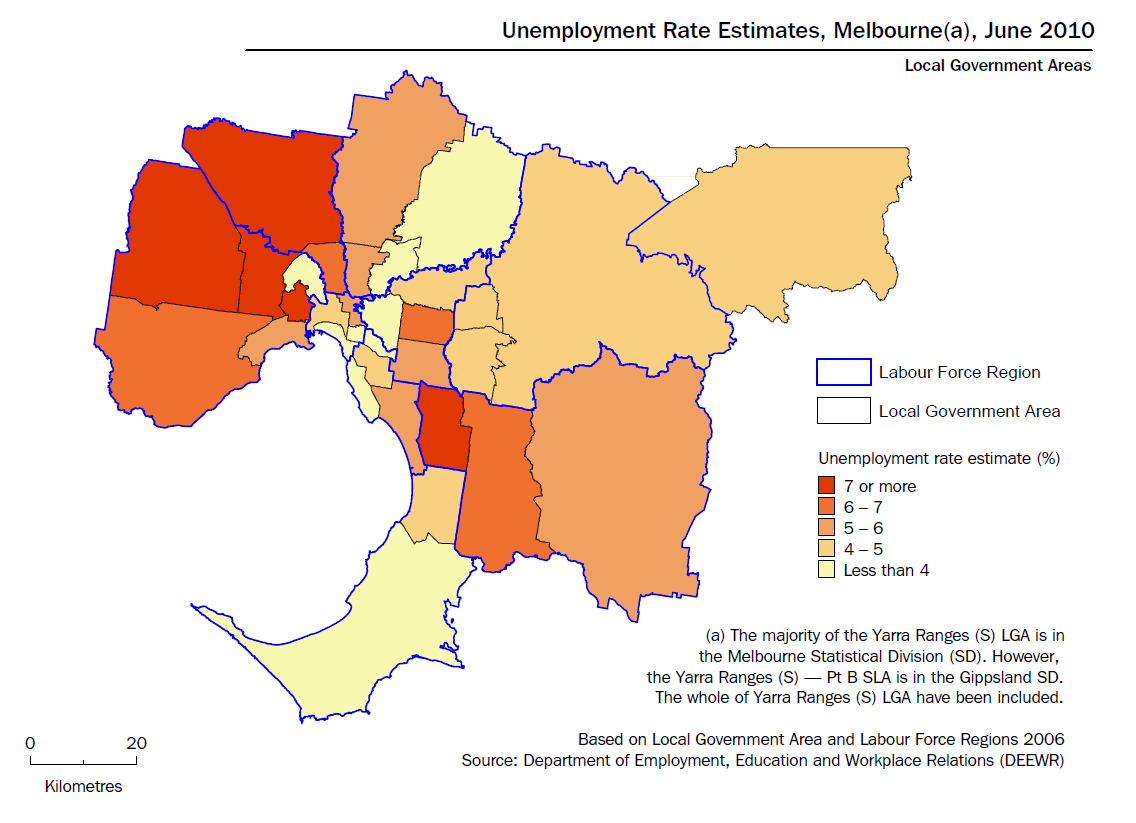SMALL AREA UNEMPLOYMENT RATE ESTIMATES
The Australian Government Department of Education, Employment and Workplace Relations (DEEWR) produce unemployment rate estimates at Statistical Local Area (SLA) level, using information derived from the ABS Labour Force Survey (LFS), supplemented by small area data from the ABS Census of Population and Housing and Centrelink.
DEEWR have made the transition to the geographic classification and population benchmarks now used in the LFS (based on the 2006 Census of Population and Housing) from those used previously (based on the 2001 Census). Unemployment estimates for SLAs and aggregates thereof for periods prior to March quarter 2008 are based on 2001 Census-based population benchmarks. For most areas, there has been no impact from the change in geographic classification. Further details can be found in paragraphs 2-5 of the Explanatory Notes for further information.
The series presented in the commentary below and in the underlying table is the DEEWR 'smoothed series'. The quarterly estimates have been smoothed using a four-quarter average ending in the reference quarter. Therefore, the reference period refers to an average over the year ended the last month of the reference quarter (for example, June quarter 2009 refers to the average of the four quarters from September quarter 2008 to June quarter 2009, or the average over the year ended June 2009).
In June quarter 2010, the highest unemployment rates were recorded in the LGAs of Greater Dandenong (10.9%), Central Goldfields (10.4%) and Hume (10.0%), while the lowest unemployment rates were recorded in Nillumbik (1.8%), Stonnington (2.7%) and South Gippsland (2.9%).


View underlying table as an Excel spreadsheet: Download
Estimates of unemployment rate, By Local Government Area: Smoothed series from the
Downloads Page.
 Print Page
Print Page
 Print All
Print All
 Print Page
Print Page
 Print All
Print All